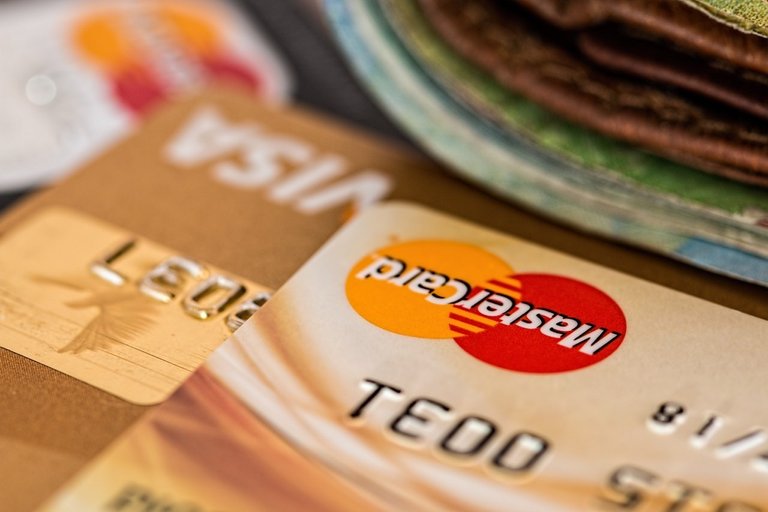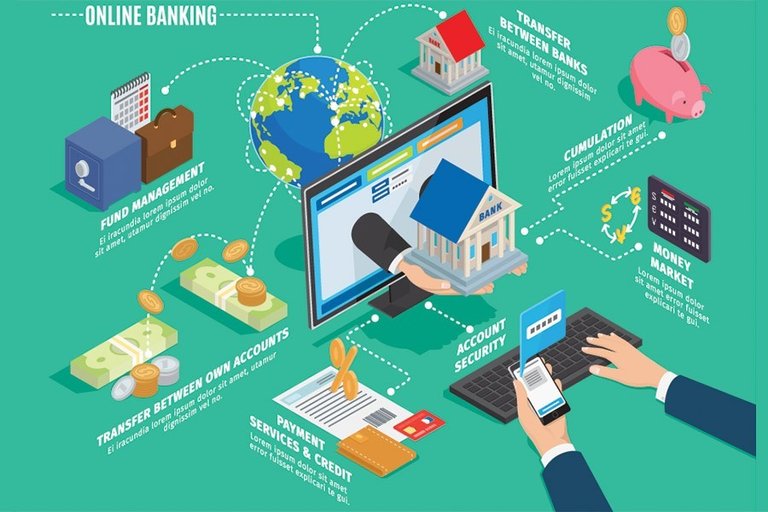
Bank Digitization: The new Era for Criminals (By Richieson Gyeni-Boateng, CAMS)
In this fast growing technological world, every company is trying to invest part of their capital into technology so as to remain relevant in the industry they operate in. Banks in general are trying their possible best to delight their customers and enhance customer satisfaction and retention. Banks are investing millions of cedis to cope with the competition of technology in the banking industry. Every bank is now going digital to satisfy their customers by bringing banking to their (customer) door steps and/ or even “washrooms”.
When we talk about bank digitization, we mean a bank running or doing more business via technology. It is the conversion of data into a digital format with the adoption of technology. By embracing digitalization, banks can provide enhanced customer services. This provides convenience to customers and helps in saving time. Digitalization reduces human error and thus builds customer loyalty. The use of automation can speed up both external and internal processes, both of which can improve customer satisfaction.
Criminals are now also thinking outside the box to use these technologies to their advantage to further deepen their money laundering activities. Everybody in the banking industry thinks the emergence of digital banking will reduce the risk of money laundering and terrorist financing, but it has made it rather easy for criminals to launder their ill-gotten funds. The Commonwealth Bank of Australia money laundering case is a clear example of how criminals are washing their money through digital banking.1
This article seeks to create the awareness on how criminals can use the various digital products and/or service of banks to further launder their ill-gotten funds.
This is how digital banking is or can help criminals launder their ill-gotten money. As we all know, the first stage in money laundering is the placement stage, where the criminal tries to put the money gotten from the criminal activities into the financial system. The criminal opens bank accounts in the names of cronies, business associates and/ or trust companies. In this era of intense competition within the banking industry where every bank is trying its best to attract and retain customers through promotional campaigns and other customer acquisition strategies, the criminal takes advantage of this to open the bank account. It should be noted that some banks allow the opening of bank account online by submitting the necessary required document(s) online. Others even have digital sections located at vantage points that allows customers to walk in at any time to transact business (open an account).
Once the account has been opened and operational, the customer request for all the digital services the bank renders as time goes on (which is the normal thing to do to make life easy and comfortable), which include internet banking (online banking), Automated Teller Machine (ATM) card, Mobile banking, Unstructured Supplementary Service Data (USSD), Credit card, Prepaid card, Self cheque scanning, web acquiring platform, etc. All these services and/ or products takes the customer away from the bank, making face-to-face interactions difficult or even impossible; an avenue for fraud and increased risk of money laundering activities.
Every bank in Ghana is literally “forcing” customers to request for ATM card (either VISA, MASTER, GH-Link) so that traffic could be directed from the banking hall to the ATM. Some banks even issue these cards to customers free of charge just to attract more customers to patronize the ATM. This is a very good strategy as it reduces the pressure in the banking halls and facilitate effective queue system. But criminals are taking advantage of this to launder ill-gotten funds by sending third parties to make deposit, which are normally below the statutory reporting threshold, into their accounts. The criminals then use the ATM cards to make withdrawals at any POS terminal and/or ATM. The international cards such as VISA, MASTER even make matters worse by allowing customer to make withdrawals from ATM and POS terminal in other countries with easy. These same cards are used to make payment for transactions online from any part of the world.
Other bank digital products or services which criminals are using to launder money are Online or Internet Banking, mobile banking, and USSD. These are made possible through the layering stage of money laundering where the criminal disguise the source of the money by creating a series of layers. That is carrying out complex financial transactions to camouflage the illegal source of the cash. The criminal achieves this by using these digital products or services to transfer money from his or her accounts to other accounts within and/ or outside the country. The criminal then creates a complex web of transactions with these products or services.
The rollout of Intelligent Deposit Machines (IDMs) by banks to promote bank digitization is another way criminals are using to launder ill-gotten money. These machines create convenience for bank’s customers and also build customer loyalty. With this machine the criminal and/ or associates don’t need to come to the banking hall during the day time to make cash or cheque deposit. They will normally come at night to make these deposits which are below the reporting threshold. The machines counts the cash and instantly credit the nominated recipient bank account. Numerous transactions can be made on any given day without any stress.
Mention can also be made of Credit card, which is just a loan facility granted to a customer on a card, as one of the digital product of banks which criminals are using to launder money. Loan request is made to the bank; the criminal spends the bank’s money (loan facility) and repays the loan with ill-gotten money. The criminals deliberately defaults in repayment, which causes agitation among the managers of the bank forcing them to demand repayment. The criminal then pays off the loan with the dirty money. I want to point out that banks are not the only place which issue out credit cards to their customers. Some major retail shops in the world (including Ghana) issue credit cards to their loyal and dedicated customers.
International Prepaid and debit cards are other growing digital bank products which are gaining grounds in Ghana. It operates the same way as the credit card. The only difference is that, with prepaid and debit cards, the customer uses his or her own funds which have been loaded unto the card. Prepaid cards can also be issue by other businesses aside the banks. From the banks perspective, criminals deposit ill-gotten money onto the cards using third parties. They now use the prepaid and debit cards to purchase things online from anywhere in the world. The deposit can be done in Ghana but usage of the card can take place in another country. From the other businesses perspective, the use of the prepaid cards to launder money is on the rise as it is very easy and these businesses, unregulated. Most of the big retail shops and filling stations in the world are now issuing prepaid cards to their customer. The criminal takes advantage to make deposits onto the card and use it to make payment for goods and/ or service rendered.
The latest addition to banks’ digital products and services is mobile money transactions. Banks are partnering with the Telecommunications companies (Telcos) to enable customers of the bank to link their mobile money accounts to their bank accounts for easy movement of funds between the accounts. This service or product is creating convenience for both customers of the bank and telcos. Customers can deposit cash into their account via their mobile money wallet without necessary going to the banking hall or through the IDMs. Criminals who fear being asked about their source of funds will get associates to deposit money unto their mobile money wallet. The money is then transferred to the bank account using the USSD and/ or mobile banking (Mobile App) platform.
The fight against money laundering and terrorist financing can be achieved through the following means.
Putting in place a robust Know Your Customer (KYC) system will help fight money laundering and terrorist financing. That is, the banks should be able to verify the identity of their customers; know their source of funds; what these customers do. Banks can also employ “know your customers’ customers” (KYCC) and “know your customers’ suppliers” (KYCS) systems to further their knowledge about their customers. Enhanced Due Diligence (EDD) can also be performed on customers perceive to be high risk to gather more information. Due diligence (KYC) on customers should not be an event but rather a process. That is, the KYC should not only be done and filed at account opening stage but should be performed and updated any time the need be.
Another way banks can fight against money laundering and terrorist financing is investing in anti-money laundering solution which will help the bank officials to monitor and analyze customer transactions. The AML solution will be able to alert bank officials of any suspicious transactions performed on any of the bank’s platform. Patterned and/ or large transactions will be exposed by the solution and further investigations carried out.
Constant training of bank staff on how to identify suspicious transactions and behavior will go a long way in the fight against money laundering through digital banking products and/ or service.
Another way for banks to fight against money laundering and terrorist financing is for Internet Service Providers (ISPs) to establish log files with traffic data that produces internet protocol numbers of subscribers and telephone numbers used for server connections. This will help law enforcement agencies to locate where the criminal transactions are emanating from. Also information collected through the servers should be shared with law enforcement agencies. Storage of the information collected should be at least for a year.
The banks should also ensure that prepaid and credit cards are linked to bank account to ensure full KYC compliance. Also there should be transaction limit placed on card withdrawals and transfers done through any of the digital banking products (eg. Internet banking, USSD, Mobile banking).
Banks should put in place measure on how to validate the identity of any third party who makes a deposit. That is, any third party who makes deposit into a bank account should provide his or her identity card as stated in the section 23(7) of the Anti-Money Laundering (Amendment) Act, 2014.
Even though criminals are using the digital banking products and/ or services to disguise the original ownership and control of the proceeds of criminal conduct by making such proceeds appear to have been derived from a legitimate source, banks need to continue with their promotion of digital banking by investing in a more secured and robust technological infrastructure.
If you require further information on this article, please contact Richieson @ [email protected]

Posted from my blog with SteemPress : https://wundef.com/bank-digitization-the-new-era-for-criminals/